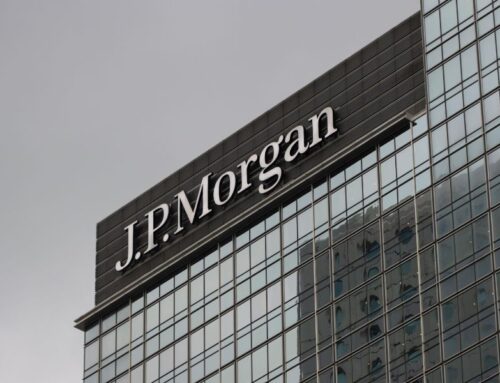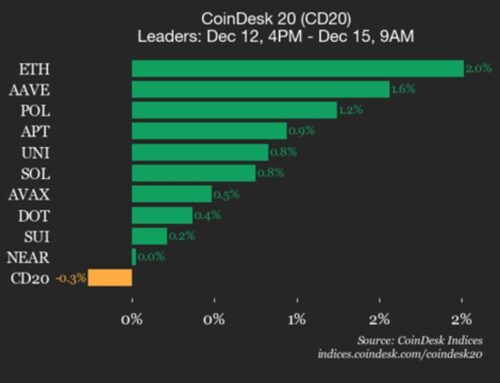In the Gallery Climate Coalition, the Art Market’s Carbon Problem Meets Its Match
May 26, 2025

When the pandemic forced the always-on art industry to take a breath, its leaders—particularly on the commercial side—found themselves confronting questions about not just economic sustainability but also ecological sustainability. There was plenty of speculation about the long-term feasibility of virtual modes of operation, as the pandemic forced the sector to experiment with digital models. Prior to the shutdown, dealers boarded an endless carousel of flights while artworks crisscrossed countries in costly, carbon-intensive containers. Maybe, the thinking went, the relentless circuit of art fairs and biennials could be scaled back.
But as soon as restrictions lifted, the art world fell back into its old rhythms. The calendar didn’t slim down; indeed, it ballooned, with even more art fairs, VIP events and otherwise carbon-intensive cultural spectacles. Still, a flicker of awareness seems to have lingered amid all the business-as-usual globetrotting, with the Gallery Climate Coalition (GCC), now approaching its fifth year, serving as one of the rare forces pushing that conversation forward.
The GCC launched in 2019 as a modest alliance of galleries and art professionals, mostly from London’s commercial scene, that decided to confront the industry’s role in the climate crisis. It started with a conversation between Heath Lowndes, GCC’s director and cofounder, and his then-boss, the respected London dealer Thomas Dane. “We were responding to these terrible images of the Amazon rainforest on fire,” Lowndes told Observer. “Something about those visceral images really triggered a conversation internally—it made us reflect on our impact as a gallery but also as an entire sector.”
SEE ALSO: Building a Living Archive at the Guggenheim – An Interview with Rashid Johnson
At the time, there were no tools a gallery could use to calculate its carbon footprint, let alone reduce it. Public institutions were taking bold steps to curb emissions and waste, but on the commercial side, no one was making those same kinds of commitments.
Lowndes began quietly reaching out to colleagues, gauging whether there was any real appetite for addressing the art world’s environmental footprint. It didn’t take long for an informal cohort to form—dealers, logistics experts, and fair organizers coming together to confront the issue head-on. That initial group would become the GCC’s founding circle, made up of heavyweight dealers like Sadie Coles and Lisson’s Greg Hilty, alongside Peter Chater of Artlogic, a logistics firm, and Victoria Siddall, then inaugural director of Frieze Masters and now director of the National Portrait Gallery. Also in the mix: Frieze co-founder Matthew Slotover.
“We started meeting at the end of 2019, and eventually there were about a dozen of us,” recalls Lowndes, who has led the organization since its founding. “None of us were climate activists or scientists, but we all knew these conversations weren’t happening in the commercial art sector and they needed to.”
The group originally intended to host a U.K. symposium on the environmental impact of art world operations, but the event was canceled by the arrival of COVID-19. “We sent the invites out in spring, and within two weeks, lockdown hit,” says Lowndes. But rather than lose momentum, the forced pause became a period of productivity, when he and his colleagues were able to bring more professionals into the fold.
After several months of virtual discussions, the Gallery Climate Coalition was officially launched as a nonprofit in October of 2020 with a stated mission to facilitate a 50 percent reduction in carbon emissions across the visual arts sector by 2030, in line with the Paris Agreement.
“In those early lockdown months, we had a strong, warm, enthusiastic response to this initiative, and we decided to answer questions instead of just discussing them,” Lowndes says. To start, the organization commissioned an environmental assessment focused on a few London art galleries. Based on this data, the group developed a set of resources and a carbon calculator that any arts organization could use to measure and then reduce its impact. Crucially, the coalition has been a free-to-join association, and members can access its sector-specific tools, guidelines and best practices at no cost. However, each new member must commit to reducing their carbon footprint and environmental impact, contributing via their actions to the coalition’s shared goals.

Lowndes emphasizes that the real power lies in members’ willingness to act in alignment and support each other along the way. Even though members are scattered across continents and operate under vastly different circumstances, the intention and commitment remain consistent. “We’re all working in the same direction.”
The GCC now has roughly 1,800 active global members from across all corners of the art industry (commercial and institutional) committed to changing how the sector operates. Members pledge to take immediate, effective steps to reduce the environmental impact of their activities by following the organization’s Best Practice Guidelines, developing a Decarbonisation Action Plan and working toward near-zero waste and circular operations. Members are required to allocate real resources—funds and staff—to support these commitments. This means establishing a Strategic Climate Fund (SCF) and forming a Green Team (or, for smaller organizations, appointing a Green Ambassador) to liaise with GCC and implement environmental policies. The coalition also stresses that action must align not only with climate targets but also with broader principles of climate justice, acknowledging the links between environmental harm and global inequities. Members are furthermore expected to publish an environmental responsibility statement on their websites or social media to publicly demonstrate their commitment. To track progress, members must also submit regular carbon reports, either through GCC’s free carbon calculator or via audits conducted by an environmental agency or freelance advisor.
Last year, the GCC introduced an upgraded version of its carbon calculator, developed with support from the Getty Foundation. The enhanced tool delivers sharper, more precise emissions data across a wide range of sector-specific activities while still prioritizing usability, making it easier for galleries and institutions to access, interpret, and act on the numbers. “The new tool represents a new way of working and operating for the second half of the decade,” says Lowndes. “We’ve got all the data collected from the original calculator over the past four or five years, and we’re now in the process of analyzing it.”
Shipping, he says, is a major emissions culprit but hardly the only one, and “you can’t set meaningful targets or cut emissions without understanding where those emissions are actually coming from.” The organization doesn’t offer a one-size-fits-all fix, but instead provides a framework of recommendations adaptable to each art organization’s context. “Our approach is to provide universally applicable recommendations, and they then have to be interpreted on a local basis.” Importantly, progress isn’t all or nothing. “Even people who don’t hit the targets—it’s not a failure. A 30 to 40 percent reduction still matters. Every percentage point counts.”
Art fairs have a huge environmental footprint, and after more than a year of discussions, the GCC formalized the Art Fair Alliance last year—a network of thirteen major fairs representing forty events across the globe. Participants were invited to join roundtables and workshops and to share data and impact reduction strategies. Getting buy-in wasn’t exactly easy, Lowndes admits: “These are market competitors, especially at the corporate level. They don’t traditionally work together, but they showed up on Zoom regularly, and they shared.” The result was the jointly funded and signed statement, the “Art Fair Co-Commitments on Environmental Responsibility,” which commits all members to a 50 percent emissions reduction by 2030.
Logistics, too, proved a challenging nut to crack. Convincing major shipping companies to align on environmental goals wasn’t simple, particularly when competitors were asked to collaborate. But the GCC succeeded in launching its Sustainable Shipping Campaign, which became one of the organization’s early flagship initiatives. It was focused on resource sharing, shipment consolidation and smarter, greener practices across the supply chain. A more structured follow-up campaign, Lowndes teases, is already in the works.

Today’s art world looks very different from the one that birthed the GCC. Rising shipping and operational costs are squeezing institutions and galleries alike, making it even harder to prioritize ecological commitments. But Lowndes points to a silver lining: for many members, going green has actually helped the bottom line. Energy efficiency upgrades—HVAC systems, climate controls, solar panels—carry upfront costs, but savings kick in quickly. Likewise, switching to recycled packaging, consolidating shipments and managing logistics more strategically can reduce both emissions and expenses. “When the market is struggling, ecological issues fall down the priority list,” Lowndes acknowledges. “But there’s a lot of work to be done that delivers cost efficiency and environmental efficiency.”
Political headwinds have presented their own challenges. Lowndes says that tariffs and the Trump administration’s choice to pull institutional funding will complicate matters, but he’s far from discouraged. “Even as the challenges grow, so does the momentum,” he says, noting that GCC membership has grown by 20 percent in the past year. Setbacks have always come with the territory, and “we didn’t get into this because it was easy.” While the coalition’s founding goal is still a 50 percent reduction in industry-wide emissions by 2030, Lowndes now believes that with collective action, a 70 percent reduction across the art sector is within reach.
“Today, we can leverage our massive international membership to push for broader systemic change and create a real sense of urgency,” he says. One of the coalition’s next priorities is expanding artist participation, and the GCC launched its first Artists’ Toolkit (resources tailored specifically to help artists reduce their climate impact) last year. But most artists, Lowndes points out, are already highly efficient with their materials; only a small fraction have production practices that generate significant emissions. “The emphasis has been on advocacy—on the potential of artists as empowered individuals—rather than pressuring them to change their practice,” he explains. “They can influence the supply chain. They can influence collectors. They can influence audiences.”
Looking ahead, data will be the key to making meaningful progress. The analysis of five years’ worth of collected information—including insights from the newly enhanced calculator—will let the GCC operate more strategically than ever. “We’ll be able to compare and contrast the data collected between the two tools and then our all-time five-year data collection,” he says. The organization is working closely with an environmental advisor to interpret the results and apply the findings sector-wide. “This will allow us to get estimates of progress for the very first time to understand where we’re at and give us greater numerical insight and effectiveness.” For the coalition’s fifth anniversary this October, it plans to release a landmark study—the first of its kind—on the global ecological footprint of the art sector.
Of course, the overarching aim is to translate data into action. “Data can reveal the low-hanging fruit, the easy wins and where changes can be made more easily,” Lowndes says. “Having that greater level of understanding can make changes more effective.” Once the report is complete, the GCC will be positioned to reassess and refine its strategy for the years ahead. “The playbook that took us through COVID to now isn’t the same playbook that will take us from now until the end of the decade.”
Search
RECENT PRESS RELEASES
Related Post



